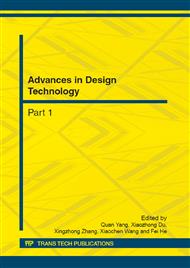p.254
p.258
p.263
p.270
p.275
p.279
p.285
p.289
p.293
Optimization Design and Numerical Simulation for Aerodynamics Shape of an Aircraft
Abstract:
Considering safety and reliability of interface between aircraft and artillery, aircraft need of increasing space of shell bands, but its range decreased by flight experimental results. It is enough to numerically simulate and calculate to aerodynamics of two projects (namely aircraft increased spacing bands vs. archetype aircraft) model in this paper. The simulation results show that big space of shell bands affect aircraft body’s coefficient of drag, and keep to flight experimental results. In keeping to big spacing bands at the same time, it is put forward optimization scheme that aircraft can reach to design range by adjusted tails shrink angle. When the tails shrink angle reached to six degrees, the big spacing bands aircraft’s coefficient of drag decreased obviously and pressure coefficient little increased to avail of improving aircraft’s range by a large of numerical simulations.
Info:
Periodical:
Pages:
275-278
Citation:
Online since:
November 2012
Authors:
Price:
Сopyright:
© 2012 Trans Tech Publications Ltd. All Rights Reserved
Share:
Citation:


